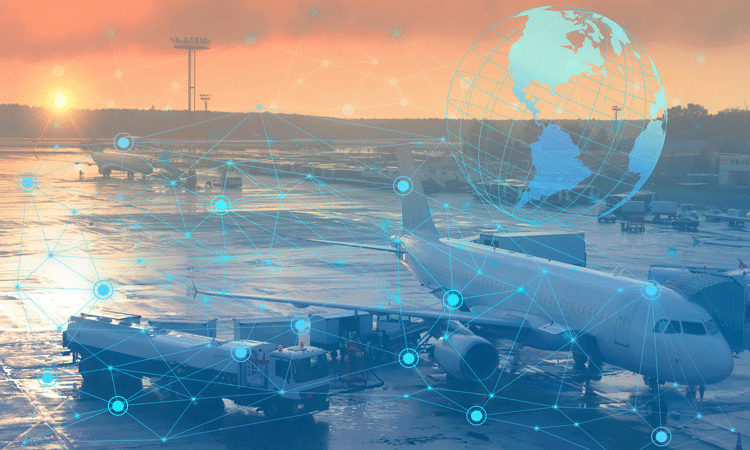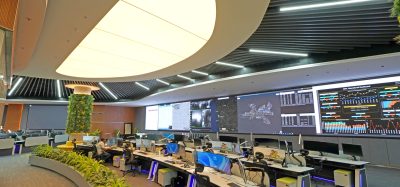IoT and AI in aviation: reducing downtime and enhancing performance
Posted: 31 July 2024 | Eric Bearton | No comments yet
Eric Bearton discusses the myriad of ways in which IoT and AI are revolutionising the landscape of aviation and changing the way we fly.


The world of aviation has been changing over the years, and with the advancement of technology, many devices have been working together; therefore, the role of IoT (Internet of Things) and AI (artificial intelligence) has become vital.
By implementing IoT and AI in aviation operations, industry leaders reduce downtime and enhance overall performance. In this article, we shall see that IoT and AI are shaking up the aviation industry and improving operations.
IoT and AI in aviation
The aviation industry has evolved enormously. At the same time, technological change has seen the scope of IoT and AI increase drastically.
The integration of IoT and AI into operations at the core enables industry leaders to reduce their downtime while enhancing overall performance.
First, let us understand exactly how IoT and AI reshape the face of the aviation industry. IoT simply means a network of inter-linked devices collecting and exchanging data on their own. In the case of aviation, these are sensors installed on aircraft, ground units and many kinds of personal devices belonging to passengers.
While AI gives machines the ability to learn from data and make intelligent decisions, aviation companies, by joining forces with the power of the IoT and AI, derive real-time data insights to help optimise many aspects of operations.
AI and its role in aviation
The role of AI is huge in aviation: it powers decision support systems, improves safety measures and makes flight operations efficient. For example, machine learning algorithms can analyse big data streams for anomalies and predict problems that may occur before they ever manifest. As such, airlines can fix them before they become problems, reducing downtime and improving safety.
The role of IoT in aviation
IoT has transformed airlines’ monitoring and management of their equipment much more efficiently. From the engines to avionics systems, IoT sensors continuously collect real-time data that supports the monitoring of health and performance regarding air carriers. With this data at hand, airlines can structure maintenance schedules, predict component failures and minimise unforeseen downtime.
Real-time data analytics for improved efficiency
One of the prime advantages that IoT and AI can offer the aviation industry is real-time data analytics. This technology can give airlines further insight into their operations and make data-driven decisions. Analytics performed on real-time data regarding fuel consumption, flight routes and passenger preference will help optimise flight routes, cut fuel costs and offer customised services. Real-time data analytics thus allow betterment in operational efficiency and consequently enhance passengers’ travel experiences.
Advancements in predictive maintenance
Predictive maintenance in the realm of aviation operations is critical because it helps avert breakdowns and greatly reduces aircraft maintenance costs. IoT sensors continuously monitor aircraft component conditions and trigger an alert to maintenance crews for the need for maintenance. Via the adoption of AI algorithms, airlines are now in a position to predict the remaining useful life of components and proactive planning of maintenance activities. This not only minimises unscheduled downtime, but also makes sure that the life of aircraft components is extended – leading to cost-savings.
Enhancing safety measures with AI
Safety is the prime concern of any airline industry, and AI is playing a big role in enhancing safety measures within them. AI algorithms analyse a huge amount of data from flight systems, weather conditions and historical records to identify patterns and potential safety hazards. This information can then be used by airlines to implement proactive measures to prevent accidents. For example, AI-empowered systems can detect potential runway incursions or analyse data from flight simulators in order to come up with aspects where pilot training needs to be improved.
Optimising flight operations
IoT and AI are changing the face of flight operations by allowing airlines to optimise several facets of the process. For instance, airlines can track fuel consumption, the performance of components and flight trajectories in real-time using IoT sensors. That information, when analysed, provides an opportunity for airlines to find ways of saving fuel. AI algorithms also optimise flight schedules by taking into consideration factors such as weather, airspace congestion and passenger demand.
Reducing operational costs with IoT technology
Operational costs are a principal issue for any airline, and IoT technology has a lot to offer in terms of cost reduction possibilities. With the implementation of IoT sensors, airlines can trace ground support equipment in real time. Such tracing will help them ensure proactive maintenance whenever necessary and reduce equipment downtime. Besides ground support equipment, airlines can also optimise ground operations by automating certain activities, for example, processes for baggage handling and aircraft turn-around times. A seamless interaction between different systems is enabled by IoT technology, which helps the airline reduce operational costs and enhance efficiency.
Improving ground operations
Ground operations play an integral role in the comfort of smooth aircraft turnarounds and efficient airport operations. Through the integration of IoT and AI, airlines could streamline their ground operations in several ways. For example, IoT sensors might monitor runway and taxiway conditions, further identifying cracks or foreign object debris that might result in hazards. AI algorithms can analyse such data to provide insights for maintenance crews to address issues promptly.
AI-powered decision support systems in aviation
On the other hand, decision-making in aviation is complex because of the many variables. AI-driven decision support systems would help airlines optimise their decision-making and hence their operations. AI algorithms are able to analyse lots of data, from weather forecasts and aircraft performance through to air traffic conditions and recommend the most optimal route, fuel consumption and maintenance schemes for the aircraft. This way, airlines can make data-driven decisions, reduce delays and increase resource efficiency.
Optimising fleet management through AI
Fleet management is one of the most important parts of aviation operations and AI is extremely useful in this sphere. With real-time data captured by IoT sensors on every plane, AI algorithms can automatically ensure that fleets are used to their fullest potential, set schedules for maintenance and co-ordinate crew members. In this manner, airlines are better placed to attain maximum efficiency with reduced grounding time for maintenance and at minimum costs. AI-driven fleet management may also predict changes in demand, enabling airlines to adjust the size of their fleets and even flight schedules accordingly.
Implementing IoT sensors for condition monitoring
It is essential to monitor conditions to ensure the safety and reliability of aircraft parts. IoT sensors help in continuously tracking the condition and performance of different systems. For example, IoT sensors can track the health of engines, avionics systems and structural components. With data captured, such anomalies are detectable and airlines can schedule maintenance accordingly to ensure the issue is resolved. Installing IoT sensors for condition monitoring allows airlines to schedule maintenance in advance, rather than experiencing unscheduled downtime.
Overcoming challenges in integrating IoT and AI
While integrating IoT and AI brings numerous benefits to the aviation industry, it also presents certain challenges. One of the main challenges is ensuring data security and privacy. With the massive amount of data being collected and exchanged, airlines must have robust cyber-security measures in place. Additionally, the adoption of IoT and AI technologies requires significant investments in infrastructure and employee training. Overcoming these challenges requires collaboration between aviation companies, technology providers and regulatory bodies.
Revolutionising the industry
The integration of IoT and AI in aviation is revolutionising the industry, offering unprecedented opportunities to reduce downtime and enhance overall performance. By leveraging real-time data analytics, predictive maintenance and AI-powered decision support systems, airlines can optimise flight operations, improve safety measures and reduce operational costs. The adoption of these technologies not only enhances efficiency, but also ensures a better travel experience for passengers.
Despite the challenges associated with implementing IoT and AI, such as data security and significant investment requirements, the benefits far outweigh the obstacles. Collaborative efforts between aviation companies, technology providers and regulatory bodies are essential to fully realise the potential of these technologies. As the aviation industry continues to evolve, the ongoing advancements in IoT and AI will play a crucial role in shaping a safer, more efficient and more sustainable future for air travel.
By embracing these innovative solutions, the aviation sector can achieve new heights in performance and reliability, ultimately transforming the way we fly and paving the way for a more connected and intelligent aviation ecosystem.


c: Eric Bearton
Eric Bearton is a mechanical engineer driven by a keen interest in the intricate world of aviation and mechanics. With a robust educational foundation and practical experience in the manufacturing industry, Eric has become a recognised expert in specific areas, including avionics, propulsion systems and structural engineering. Currently, Eric is working with Start Pac as a content developer.
AI in Action: Enhancing Ground Operations at Frankfurt Airport
30 Sept 2025 | 11:00 AM BST | FREE Virtual Panel Discussion
Airports face mounting pressure as passenger volumes grow and turnaround windows tighten. But what if you could see your ground operations in real time, and predict issues before they occur?
Join us for a high-impact virtual panel featuring Frankfurt Airport, FraAlliance, and zeroG – Lufthansa Group’s AI powerhouse, as we explore how AI and computer vision are reshaping airside efficiency, safety, and collaboration.
Meet the experts:
- Pascal Schimanski, Project Lead – Digitalisation, FraPort
- Pauline Nolte, Project Director Strategy & Consulting, FraAlliance
- Christian Ritter, Head of Product & Principal Data Scientist, zeroG
- Moderated by Francesca Vetter, Head of Marketing, zeroG
Register now to ask your questions live and take away practical, proven insights on applying AI at scale in your airport – Register Now – It’s Free!


















